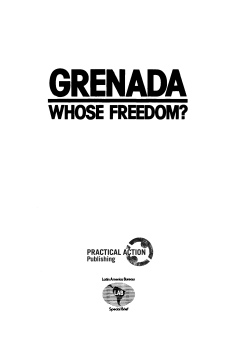
Additional Information
Book Details
Abstract
The US invasion of Grenada in October 1983 was a flagrant and direct violation of international law. The Reagan government's determination to suppress the Grenadian people's right to sovereignty and the shallowness of its justification for this position indicate a preparedness to escalate further violence with which its mandate is imposed in the Caribbean and Central America. Grenada threatened the US because it remained stubbornly independent and sought to develop its tiny society on its own terms. The tragic collapse of the government of teh New Jewel Movement simply provided the pretext for an invasion that had been prepared and rehearsed long before. Grenada: Whose Freedom? gives the background to and outlines the substantial advances of the 1979 'Peaceful Revolution' and shows why it was repugnanat to both Washington and the Thatcher government. It discusses the debate inside the New Jewel Movement, the fall of Maurice Bishop and the events surrounding the invasion itself.
Table of Contents
| Section Title | Page | Action | Price |
|---|---|---|---|
| Title Page | 1 | ||
| Copyright Page | 2 | ||
| Table of Contents | 3 | ||
| Foreword | 5 | ||
| Map | 7 | ||
| 1: Grenada in Brief | 9 | ||
| 2: Pre-Revolutionary Background | 17 | ||
| 3: The Peaceful Revolution | 31 | ||
| 4: Collapse of the Revolution | 54 | ||
| 5: Invasion | 89 | ||
| Further Reading | 104 | ||
| Appendices | 105 | ||
| 1: British Policy Towards Grenada, 1979 to October 1983 | 105 | ||
| 2: Extracts from the Minutes of the Extraordinary Meeting of the Central Committee of the NJM, 14 to 16 September 1983 | 111 | ||
| 3: Speech given by Fidel Castro in Havana, 14 November 1983 | 118 | ||
| 4: US Lawyers' View of the Legality of the US Invasion of Grenada | 125 | ||
| 5: Members of the PRG, September 1983 | 127 | ||
| 6: Members of the Central Committee of the NJM, September 1983 | 127 | ||
| 7: Members of the Revolutionary Military Council, October 1983 | 128 | ||
| 8: Leaders of the Countries of the OECS | 128 |
